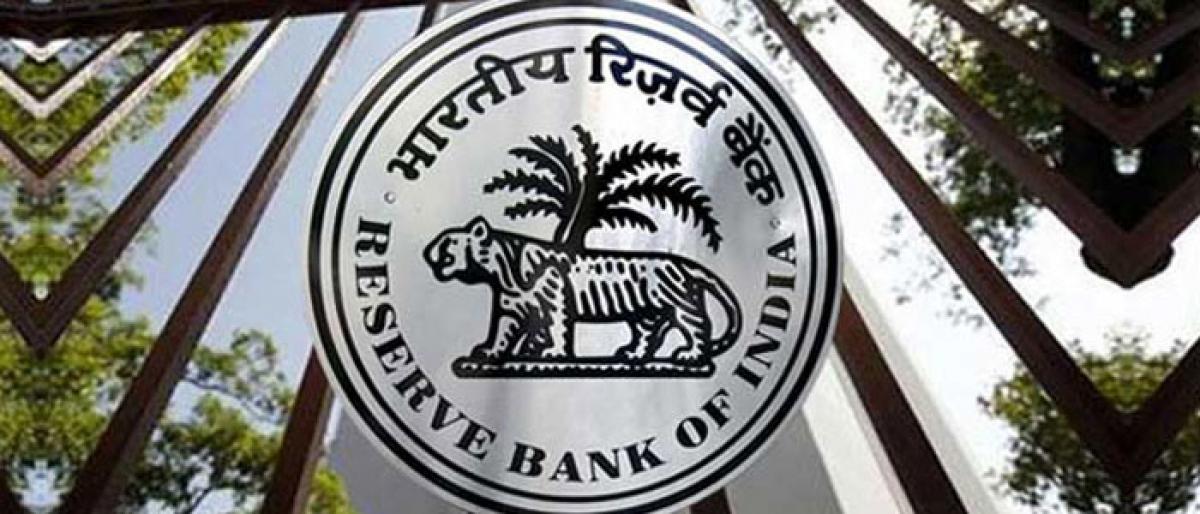Live
- They always want me to win, and now I feel lucky to have been offered a story like ‘Zebra’: Satyadev Kancharana
- ‘Democracy first, humanity first’: PM Modi in Guyana's parliament on two countries' similarities
- PKL Season 11: Telugu Titans register third straight win to top standings
- Is Pollution Contributing to Your COPD?
- NASA Unveils Underwater Robots for Exploring Jupiter's Moons
- Additional Central forces arrive in violence-hit Manipur
- AR Rahman and Saira Banu’s Divorce: Legal Insights into Common Issues in Bollywood Marriages
- 82.7 pc work completed in HPCL Rajasthan Refinery area: official
- Curfew relaxation extended in 5 Manipur districts on Friday
- Tab scam prompts Bengal govt to adopt caution over fund disbursement
Just In

Wholesale inflation hit a twomonth high of 513 per cent in September, indicating rising inflationary pressures which may restrain the Reserve Bank of India from reducing key interest rates in near future to boost growth The inflation measured on Wholesale Price Index WPI was significantly lower at 314 per cent in the same month last year In the preceding month of August this year too, the w
Wholesale inflation hit a two-month high of 5.13 per cent in September, indicating rising inflationary pressures which may restrain the Reserve Bank of India from reducing key interest rates in near future to boost growth. The inflation measured on Wholesale Price Index (WPI) was significantly lower at 3.14 per cent in the same month last year. In the preceding month of August this year too, the wholesale inflation stood lower at 4.53 per cent. This is a clear indication that inflation is on an upward trajectory.
As expected, rising fuel prices contributed the most to the incremental upswing in the inflation graph. According to the official data announced on Monday, the index for crude petroleum and natural gas group went up by 1.1 per cent to 95.9. Inflation registered in petrol stood at 17.21 per cent while in diesel, it was higher at 22.18 per cent. With ever-increasing LPG prices, wholesale inflation in this space was 33.51 per cent. Import data also indicated rising burden of the crude oil bill.
Official data showed that oil imports went up by 33.59 per cent to $10.91 billion in September. This significant increase in oil import bill came in a month which witnessed a de-growth of 2.1 per cent in exports to $27.95 billion. With rupee on a downward spiral, oil import bill will further go up in coming months, fuelling inflationary pressures.
Apart from fuels, hardening of food prices also played a key role in pushing up inflation. Data showed that deflation in the prices of food articles fell to 0.21 per cent compared to 4.04 per cent in August. In the case of vegetables, deflation came down to 3.83 per cent in September against a whopping 20.18 per cent in the previous month. This trend signals a clear upswing in food prices which are expected to further fuel food inflation.
In recent monetary policy review, the Reserve Bank surprised everyone by keeping key rates unchanged. It was widely expected that the apex bank would go for a rate hike to rein in rupee depreciation. That was not the case. RBI however flagged inflationary risks on the account of rising oil prices. It also said that tightening of global financial conditions would pose substantial risks to inflation as well as growth. With inflation heading north, RBI is likely to continue its hawkish tone.
However, it is a fact that the apex bank takes retail inflation into account while taking policy decisions, not the wholesale inflation. Retail inflation stood at 3.7 per cent in September, which was lower than expected. But with wholesale inflation increasing, retail inflation will also head north soon than later, creating hurdles for economic growth. That will obviously be a bad omen for the Central government as it heads into general elections in May 2019. However, the direction rupee and oil prices take in coming months will decide which way the inflation pressures move. The other key issue is agriculture production. Whatever it is, higher inflation means more trouble for the Modi government!

© 2024 Hyderabad Media House Limited/The Hans India. All rights reserved. Powered by hocalwire.com







